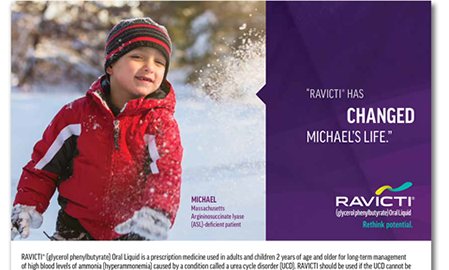Cracking the code for success in the rare-disease space seems like it should be easy. There’s a defined population, a small patient group and limited drug competition, if any.
In reality, it is anything but simple. “Orphan marketing is not plug and play,” Cambridge BioMarketing CEO and partner Maureen Franco tells MM&M. “It is a different way of thinking.”
For one thing, she explains, finding the patients to talk with is a challenge. Finding the doctors who may treat them—and whom marketers want to connect with—is just as difficult. “There are a lot of moving parts to this stuff. It is not just getting people to write ‘scripts,” chief creative officer and partner Mike Hodgson says.
And then there is the challenge of explaining these complex, rarely seen conditions. “Many of these diseases are ones no one has ever heard of,” Franco says.
But many businesses have been hearing about the Cambridge, MA, agency, which has seen its staff grow from 40 employees in 2012 to 60 in 2013. This growth is in tandem with the company’s growing workload which included five new accounts in 2012 and five new Agency of Record assignments in 2013.
This year has also started apace, including the launch of BioMarin’s enzyme replacement therapy Vimizim for Morquio A Syndrome. This launch was soon followed by one for AstraZeneca and Bristol-Myers Squibb’s launch of Myalept for lipodystrophy.
Business has been so brisk that the company has delayed plans to start a west coast office. “We reflected and thought that starting a new office in the middle of three launches probably wasn’t a sound idea in 2013,” Franco says, but notes that it is still on the table.
Seeing big-name pharma on a roster of a niche agency’s client may be unexpected, but the bigger leagues happened to find Cambridge through the mergers and acquisitions and collaboration activity that have been coursing through the pharmaceutical industry.
“We are constantly changing the logos on our client list because our clients continue to get purchased,” Franco laughs, but the chain of ownership is what brought AstraZeneca and Bristol-Myers Squibb to the Bay State firm because Amylin—which BMS bought—signed Cambridge to handle Myalept. Franco said AZ and BMS “recognized us as the disease experts” and they kept the account. Similarly, Sanofi swallowed Genzyme, which had already inked a deal with CB.
The Sanofi/Genzyme relationship has passed the seven-year mark, and the firm’s clients generally seem to stick around, as do employees, who are a mix of PhDs, MDs and creatives with backgrounds that include pharma and consumer, as well as experience in large agencies.
“We don’t burn people out. We don’t run the place 24 hours a day,” Hodgson says, and notes this is a shock to hires with recent big agency experience. He notes, however, that the side benefit of a work-life balance is a force that is able to tackle the hard stuff with a clear, creative mind.
While 2013 has been busy, 2014 brisk, 2015 does not show signs of letting up. Franco says CB has four clients with Phase-III products, some of which are on the brink of being put up for regulatory review.
“At least one [is expected to] launch this year and another in 2015,” says Franco.
“We’re pretty busy,” Hodgson says, adding, “We’re hiring. Come up to Boston.”
From the July 01, 2014 Issue of MM+M - Medical Marketing and Media








